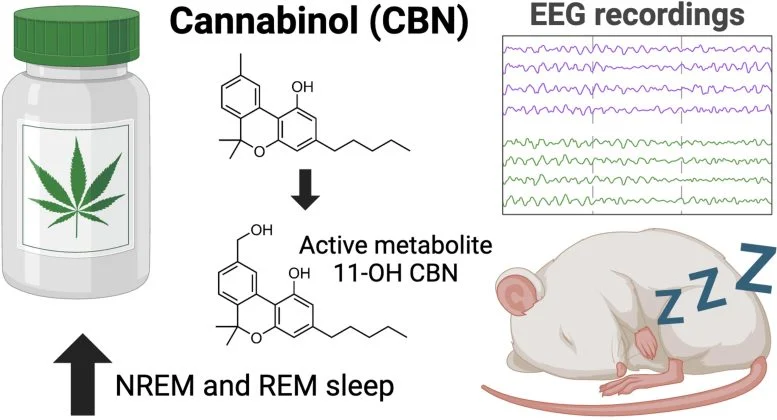Cannabis Component for Sleep Identified
Sydney, Australia – Scientists at the University of Sydney have uncovered groundbreaking evidence that a compound in cannabis, cannabinol (CBN), may be an effective aid for improving sleep. Published in the journal Neuropsychopharmacology on November 12, the study provides the first objective data to support the long-standing folklore that aged cannabis, rich in CBN, can make users feel sleepy.
This discovery comes from the Lambert Initiative for Cannabinoid Therapeutics at the University of Sydney. The research team, led by Professor Jonathon Arnold, Director of Preclinical Research at the Sydney Pharmacy School, set out to investigate the role of CBN in sleep. For decades, anecdotal evidence suggested that cannabis aged over time could promote drowsiness due to the accumulation of CBN. However, prior to this study, there was little scientific research validating this theory.
“Until now, there was no convincing scientific evidence to support the idea that CBN could improve sleep. Our study provides the first objective evidence, showing that CBN increases sleep, at least in rats, by positively influencing sleep architecture,” said Professor Arnold.
What Is Cannabinol (CBN)?
CBN is a compound formed from the breakdown of THC (delta-9-tetrahydrocannabinol), the main psychoactive component of cannabis. Over time, THC is converted into CBN, which means that older cannabis generally has higher levels of this compound. While many cannabis users have noticed a more sedative effect from aged cannabis, scientific understanding of CBN’s role in sleep was limited—until now.
The study, which involved testing purified CBN on rats, employed advanced monitoring techniques to observe changes in their sleep patterns. Researchers found that CBN increased both non-rapid eye movement (NREM) and rapid eye movement (REM) sleep. NREM sleep is crucial for physical restoration, while REM sleep is tied to dreaming and emotional processing. Overall, CBN led to longer sleep durations with effects comparable to those of the sleep drug zolpidem.
CBN’s Non-Intoxicating Effects
Unlike THC, which intoxicates by activating CB1 cannabinoid receptors in the brain, CBN did not appear to induce intoxication. The study revealed that CBN weakly activates CB1 receptors, suggesting that it does not produce the typical “high” associated with cannabis. Interestingly, a metabolite of CBN, 11-OH CBN, was found to have a stronger effect on CB1 receptors, which may contribute to CBN’s sleep-promoting benefits.
“This is the first evidence that CBN, through its metabolism in the body, can influence sleep in a way that its parent molecule THC does not,” noted Professor Arnold. “The 11-OH CBN metabolite may play a significant role in CBN’s sleep-enhancing properties.”
Ongoing Research and Future Trials
The research team has called for more studies to explore CBN’s potential in treating sleep disorders. While these findings are confined to rats, the team is optimistic about the possibility of CBN benefiting humans as well. In a related clinical trial, Professor Iain McGregor, Director of Clinical Research at the Lambert Initiative, has been leading a human study on CBN for insomnia. Early results have been promising, suggesting CBN’s potential as a novel sleep aid.
“Our study in humans showed very encouraging results, and we are now planning further research to determine whether repeated dosing could enhance these benefits,” said Professor McGregor.
Professor Arnold and his team have also started a preclinical drug discovery program to investigate whether other compounds in cannabis, or even conventional sleep aids like melatonin, could amplify the sleep-promoting effects of CBN.
The research team’s work on CBN marks an important step in understanding the therapeutic potential of cannabis compounds, particularly in the context of sleep disorders like insomnia. The next logical step will be large-scale human trials to confirm whether CBN can effectively address sleep problems in people.
For more information, refer to the study: “A sleepy cannabis constituent: Cannabinol and its active metabolite influence sleep architecture in rats” by Jonathon C. Arnold et al., published on November 12, 2024, in Neuropsychopharmacology.
Related Links:
Findings on sleep and cannabinoids at the International Cannabinoid Research Society
Further research on cannabinoids and insomnia by the Lambert Initiative











